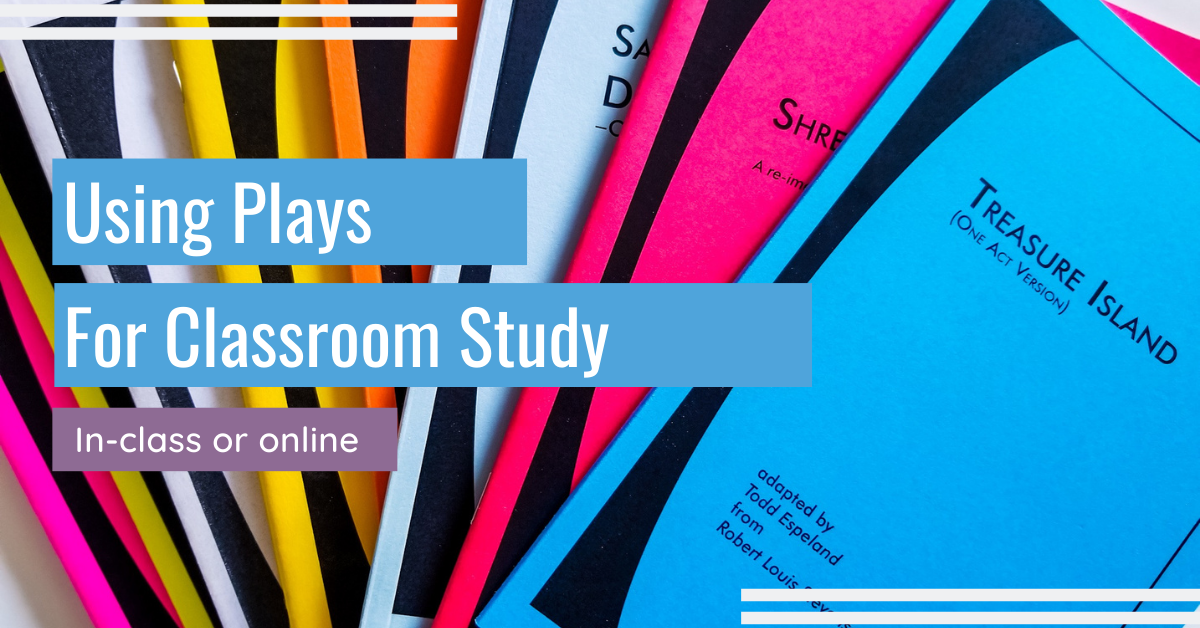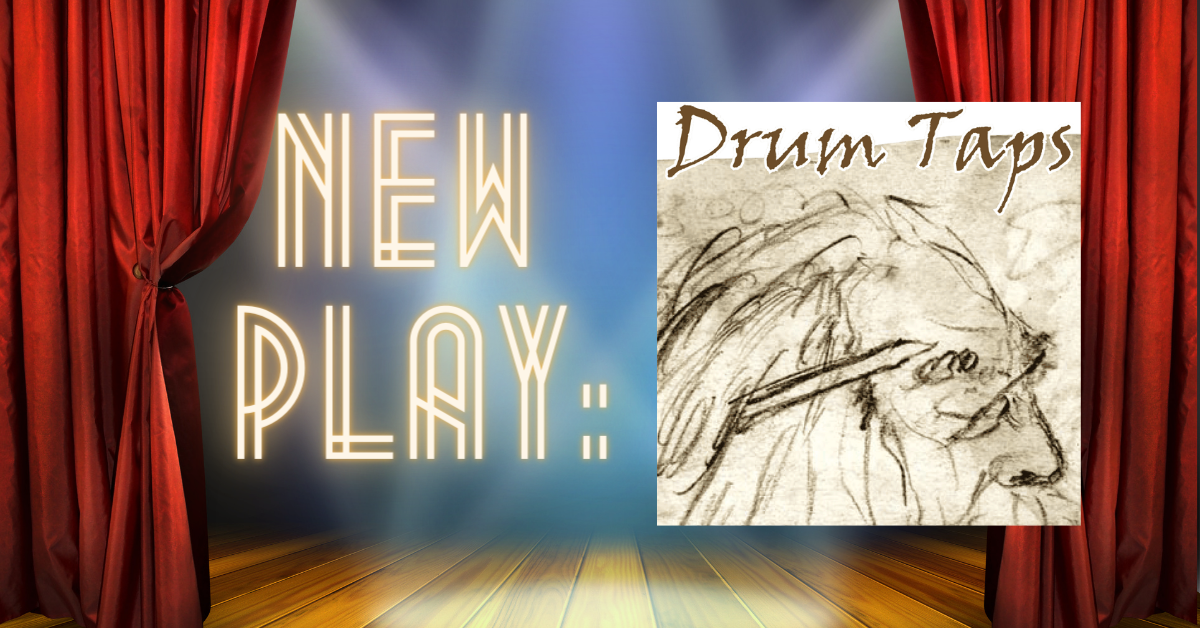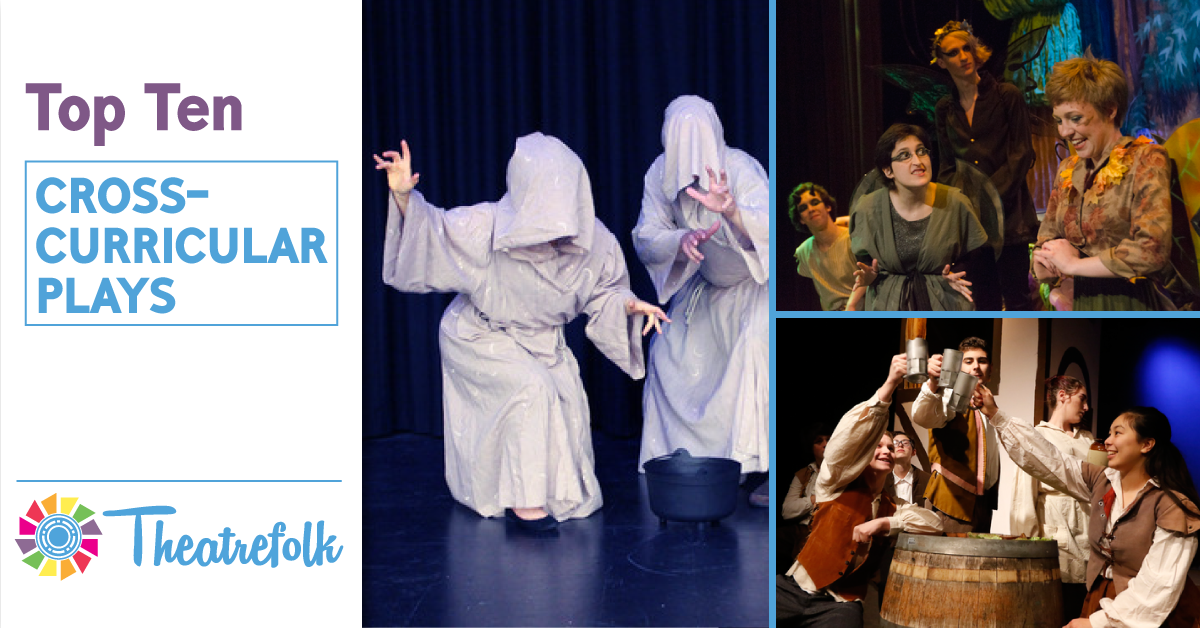There exists in everyone the potential for good or evil. Laramie Dean's adaptation of Dracula asks the question: How much would it take to bring out the darkness inside of you?
Using Plays for Classroom Study
During this tumultuous time, when your theatre classroom may be virtual, socially distanced or a hybrid of both, putting on a play might not be in the cards. Who has the time when you are juggling new technologies, health concerns, admin changes, and oh, trying to teach your classes?
But if a performance isn’t possible, that doesn’t mean that plays can’t have a place in your program. Additionally, you can use plays when you’re working with a variety of different platforms.
Scene analysis, character analysis, monologue performance, and making cross-curricular connections can all be done whether your students are virtual or social distancing in person.
Here are some examples for using plays for classroom study.
Close Reading
Close reading is an analysis tool. Students read a text multiple times for in-depth comprehension, striving to understand not only what is being said but how it’s being said and why. Close reading takes a student from story and character to drawing conclusions on author intention. Close reading prompts students to flex their thinking skills by:
- Teaching students to engage with a text.
- Teaching students to be selective. We can’t highlight everything in the text, only the most important elements.
- Teaching students to make educated decisions. All conclusions and opinions must be backed up with a text example.
Close reading does not have to be laborious. You can start quite small, for example, with a play title, and have students individually or in groups analyze the what , the how , and the why of the play title. Your virtual students can work together in break out rooms, and your in-person students can work in socially distanced groups.
Click the link at the bottom for a Close Reading Title Exercise!
You can also close read images. Find a picture of a set from a production of the play you are studying. What is happening in the image? How is it happening (analyze the lighting, whether or not the set is realistic or abstract)? Why have the director and set designer chosen the specific look for the set?
Pre/Post Read Exercises
Give students exercises that explore themes and subject matter before they study the play. For example, if a major theme of the play is friendship, have students discuss what it means to be a friend. Have students create friendship scenes (written or performed) that demonstrate the value of friendship. Another option is to give students personality traits of a character (without telling them the specific character) and have them create a physical movement (standing if in person, sitting if virtual). If the play takes place in a specific era or location (e.g., on an army base), have students do some research. What is life like on an army base?
Post-read exercises should focus on bringing the play to life. Have students create a costume for a character, or a basic set design (depending on the tools they have available). Have students create a music playlist for a specific character or scene. If the play has monologues, have students choose, rehearse, and present a monologue. If you can have students rehearse scenes in your particular environment, do that.
Cross-Curricular Connections
Read a play with students and connect it to a subject outside the drama classroom. What you do has always had implications outside of the drama classroom and now is no exception. For example, the play Drum Taps uses Walt Whitman’s poetry and takes place during the civil war. Can you connect virtually with the English or History department?
Check out our full list of recommended cross-curricular plays here.
Student Assignment: Study Guide for a Play
Study guides are often prepared by a theatre company before students come to see a production of a play. Have your students demonstrate their knowledge of a play by putting together their own study guide. This is a bigger group project and one that can culminate a unit on a play, particularly if a production or scene presentations aren’t possible. It’s also a project that can be divided up among virtual and in-person students. Each person in a group can be assigned a specific part of the study guide.
Start by dividing your students into groups and have each group find a production study guide online. Then have the groups compare and contrast the guides. What are the similarities and differences? As a class, decide on the sections for your study guide and divide the work up among students. Have each group present their guide as a digital presentation.
While we don’t have production study guides, we do have some free classroom study play guides designed to challenge students to deepen their understanding and connection to the plays they’re studying.
Complete with pre-read questions and activities, close reading analysis, and post-read activities, these comprehensive, easy-to-use study guides allow you to provide an in-depth & theatrical learning experience.
Check out our complete list of classroom study guides here. (Plus, keep checking back for more!)
Looking for plays that can be used for classroom study? Click here to see what we have.



